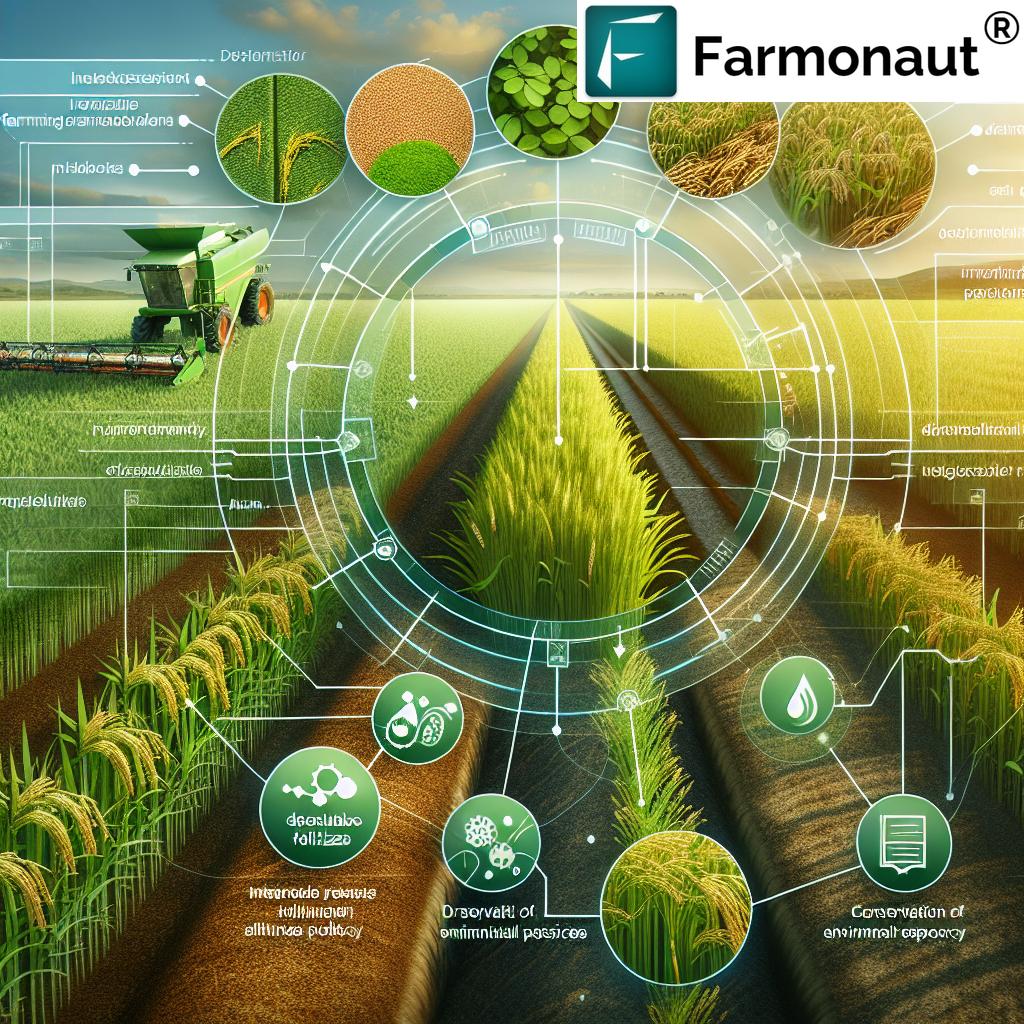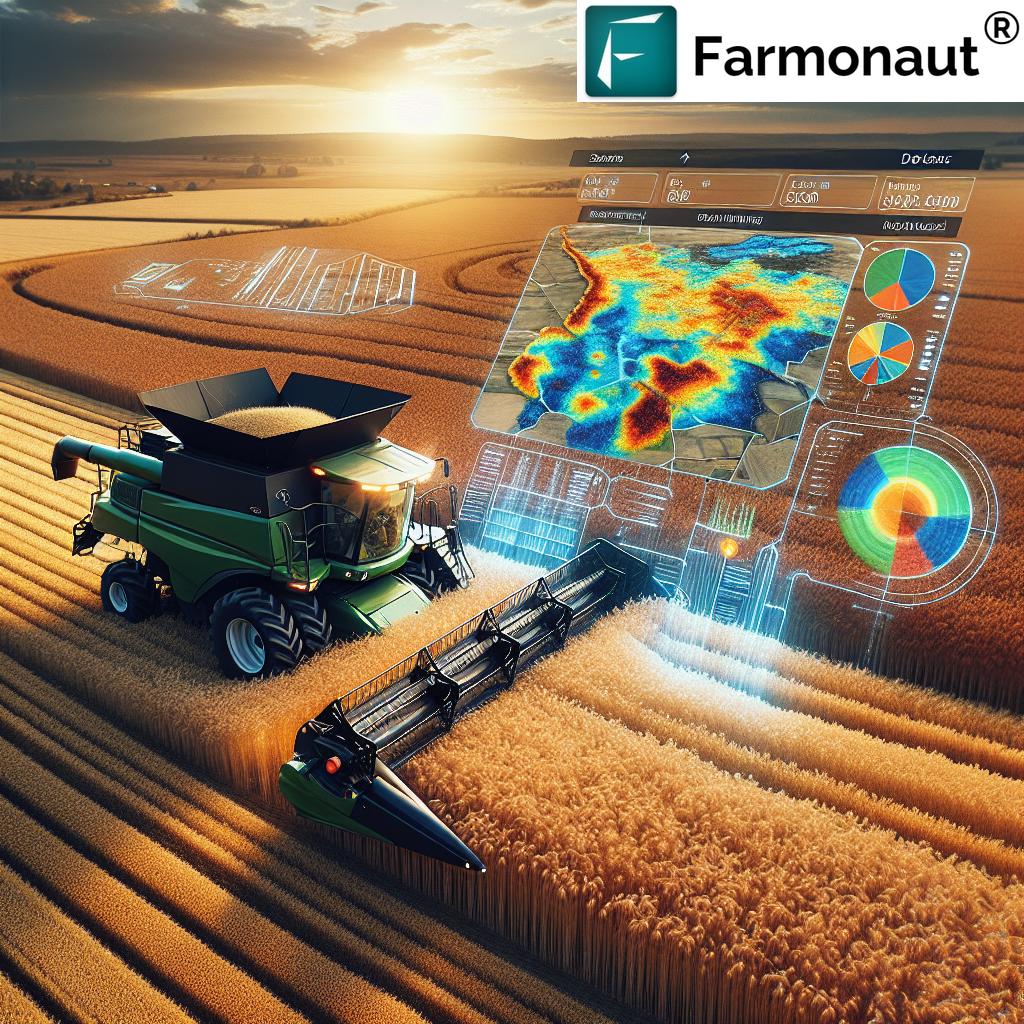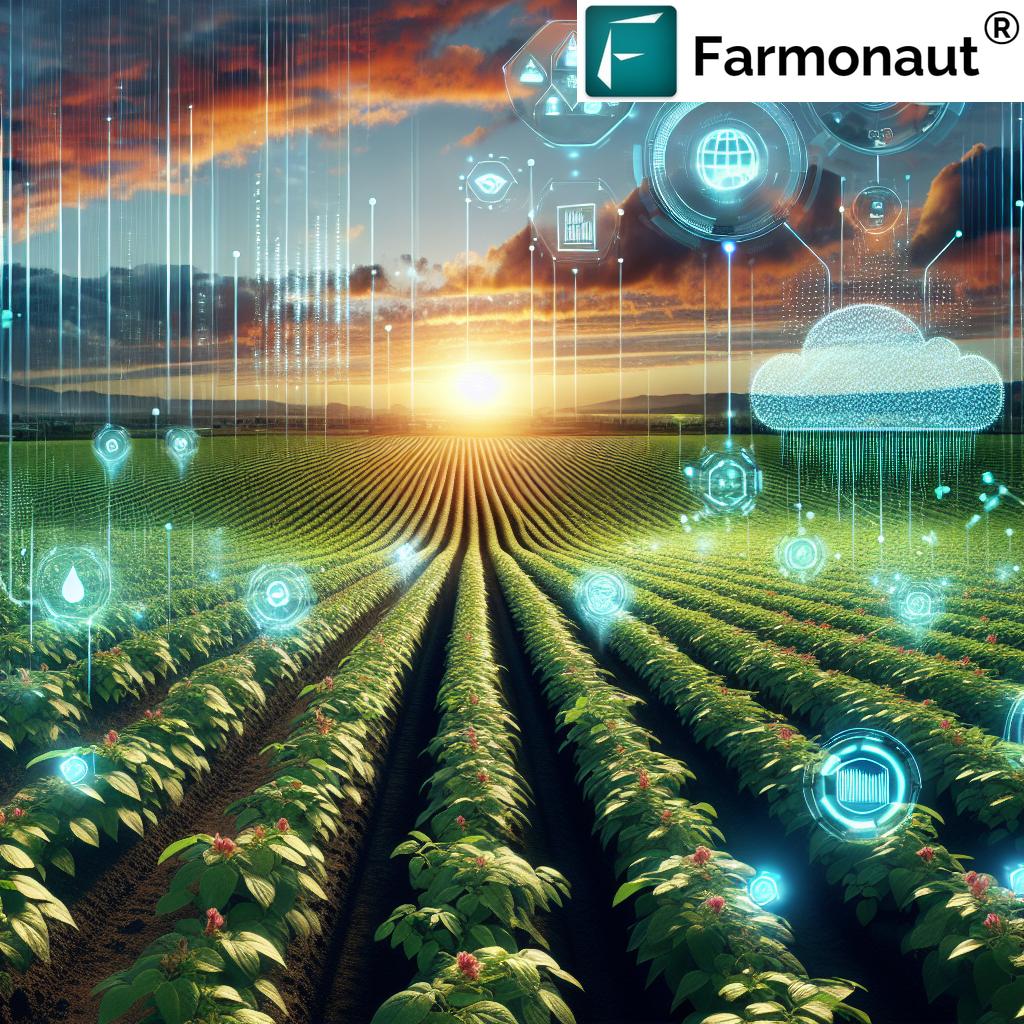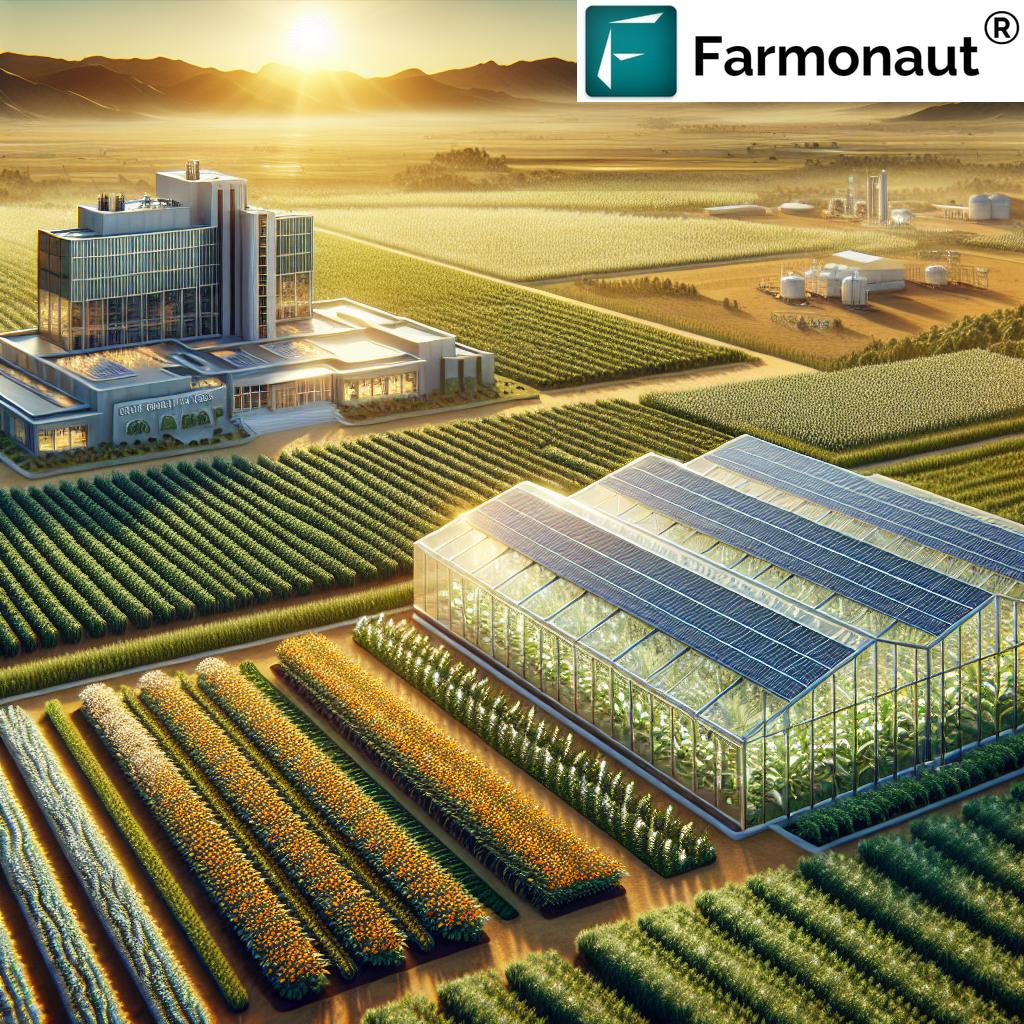Agricultural Yield Hacks: 7 Shocking Ways to Boost Output
“Precision agriculture can increase crop yields by up to 20% while reducing input costs by 15%, enhancing sustainability.”
- Introduction: The Foundation of Agricultural Yield
- Key Factors Influencing Agricultural Yield
- 7 Shocking Ways to Boost Output
- Leveraging Farmonaut for Yield Enhancement
- Comparison Table of Yield Improvement Methods
- Challenges in Enhancing Agricultural Yield
- FAQ: Agricultural Yield Enhancement
- Conclusion & Getting Started
Introduction: The Foundation of Agricultural Yield
In today’s rapidly evolving agricultural landscape, agricultural yield—the amount of crop produced per unit area—stands as a fundamental metric of our farming success. Yield directly impacts food security, economic stability, and the sustainability of our environment. As global demand for food continues to rise while arable land becomes increasingly scarce, enhancing agricultural yield is no longer optional; it’s essential.
Our efforts to maximize output must balance increased productivity with sustainable farming practices that protect resources for future generations. By integrating modern technologies like precision agriculture, efficient water management techniques, and advanced crop disease and pest control, we can overcome many of the challenges that limit productivity. In this comprehensive guide, let’s explore the top seven shocking ways to dramatically boost we our agricultural yield—while safeguarding our soil, water, and climate.
Let’s dive into the real secrets behind agricultural yield enhancement, uncovering practical, research-backed hacks that every modern farmer should know.
Did you know? According to research, soil health and fertility, efficient water management, and advanced pest and disease control are still among the most critical factors influencing higher crop yields. But with the support of emerging technologies—such as Farmonaut’s satellite-driven analytics and data platforms—farmers can now optimize these fundamentals like never before.
Key Factors Influencing Agricultural Yield
Before unveiling the top 7 hacks, let’s understand the underlying factors influencing agricultural yield. By mastering these, we can build a robust, resilient, and productive farming system.
1. Soil Health and Fertility
The foundation of high crop yields is fertile soil, which is rich in essential nutrients and has a healthy structure. Here’s how we can enhance soil health and fertility:
- Crop Rotation: Changing crop types breaks pest and disease cycles, maintains nutrient balance, and improves soil structure.
- Organic Fertilizers: Compost, manure, and biofertilizers add nutrients and beneficial microbes, increasing nutrient availability and supporting soil biodiversity.
- Reduced Tillage: Minimal soil disturbance preserves organic matter, reduces erosion, and sustains microbial life.
- Cover Cropping: Planting cover crops during off-seasons prevents erosion, locks in soil moisture, and fixes nitrogen.
All these practices not only boost soil fertility but also support environmental sustainability, laying the groundwork for consistently higher yields.
2. Water Management
Water is the lifeblood of agriculture. Efficient water management in agriculture ensures that crops receive the right amount of moisture at critical growth stages, supporting optimized yields while conserving vital resources.
- Deficit Irrigation: Applying slightly less water than a crop’s full requirement can improve water use efficiency, especially in arid regions. Research indicates yield increases up to 65% over rainfed cultivation and significant savings in water consumption.
- Modern Irrigation Systems: Solutions like drip and micro-sprinkler irrigation deliver water directly to crop roots, minimizing evaporation and runoff.
3. Crop Disease and Pest Control
Diseases and pests can devastate fields overnight. Integrated Pest Management (IPM) is a modern approach that combines chemical, cultural, biological, and mechanical control methods for:
- Minimal Environmental Impact: Using minimal pesticides by targeting only when necessary reduces residue and protects biodiversity.
- Biological Control: Beneficial insects, fungi, or bacteria control pests naturally.
- Cultural Practices: Crop rotation, resistant varieties, and sanitation break pest cycles, resulting in better yields.
4. Climate and Weather Conditions
Our farms are deeply influenced by climate variability and weather. Adapting practices like Alternate Wetting and Drying (AWD) for rice conserves water, reduces emissions, and supports high yields. AWD can:
- Save up to 38% of irrigation water
- Increase rice water productivity by 16.9% compared to continuous flooding
Wider adoption of precision climate adaptation strategies is essential for maintaining food security in the face of changing conditions.
“Efficient water management techniques can save up to 50% of irrigation water, significantly boosting crop productivity and conserving resources.”
Agricultural Yield Enhancement: 7 Shocking Ways to Boost Output
By integrating traditional wisdom with breakthroughs in technology, these seven yield enhancements will transform our crops and fields:
-
Precision Agriculture Technologies
Modern precision agriculture tools—such as satellite-guided machinery, advanced sensors, and real-time data analytics—allow us to optimize every aspect of farming:
- Variable Rate Application: Using geo-referenced data, we apply fertilizers, irrigation, and pesticides only where and when needed, minimizing waste and maximizing impact. This increases input use efficiency while reducing costs and environmental impact.
- Remote Sensing & Crop Monitoring: Multispectral satellite and drone images allow real-time crop health monitoring, early detection of stress, and informed intervention for higher yields.
Farmonaut’s platform is at the forefront, offering farmers worldwide affordable, satellite-driven crop health, soil moisture, and resource monitoring tools. These help us identify invisible issues in our fields and respond before yields are compromised.
Check out Farmonaut’s Web and Mobile Apps for real-time precision farming insights:
Start Precision Monitoring NowWant to integrate satellite data into your own systems?
Explore Farmonaut API
| API Developer Docs -
Efficient Water Management in Agriculture
Every drop counts! Advances in modern irrigation systems—including drip, micro-sprinkler, and smart, sensor-driven irrigation—direct water precisely to root zones. Major benefits include:
- Reduced evaporation (especially important in hot climates)
- Minimized water waste through real-time moisture tracking
- Timely, location-specific irrigation for optimal plant growth
Many advanced systems allow automatic adjustments based on soil moisture sensors and weather data—preventing both over- and under-watering across different parts of our fields.
Learn more about integrating cutting-edge fleet resource and irrigation management with Farmonaut:
Fleet and Resource Management Tools -
Sustainable Soil Health and Fertility Improvement
Long-term productivity and agricultural yield enhancement start with building the foundation of fertile soil. Key techniques to sustain fertility include:
- Organic amendments—compost, green manure, and crop residues—maintain organic matter and microbial diversity.
- Crop rotation disrupts disease cycles and optimizes nutrient usage.
- Minimal tillage minimizes erosion and supports stable soil biology.
- Soil cover management preserves moisture while fixing nitrogen (via leguminous covers).
Maximizing carbon sequestration while growing food is also crucial for sustainability.
For organizations and farmers looking to reduce and monitor their environmental impact, Farmonaut offers
Carbon Footprinting Solutions for compliance, transparency, and continuous improvement. -
Integrated Crop Disease and Pest Control
Integrated Pest Management (IPM) is a holistic approach that reduces reliance on synthetic pesticides while ensuring safe, productive fields. Core principles include:
- Cultural methods: Crop rotation, resistant varieties, clean fields
- Biological control: Beneficial insects, bacteria, or fungi naturally suppress pests and diseases
- Targeted chemical use: Pesticides only when critical, for minimal environmental residue
Satellite-driven monitoring—available via Farmonaut’s apps—detects crop stress early, supporting effective IPM strategies and minimizing economic losses.
Ensure rapid response to crop health threats:
Discover Crop Plantation, Forest, and Advisory Tools
-
Controlled-Environment Agriculture (CEA)
CEA—including greenhouses, hydroponics, and urban vertical farms—lets us grow abundant, high-quality crops year-round. Key advantages:
- Precision control of temperature, humidity, CO2, and nutrients
- Reduced reliance on unpredictable weather and climate variability
- Maximal output per square meter—ideal for urban or limited-space settings
- Reduced exposure to open-field pests and diseases
Farms and cooperatives can use Farmonaut’s
Large Scale Farm Management Platform
to optimize resource use, deployment, and CEA operations across vast or multi-location facilities. -
Genetic Improvement and Mutation Breeding
Advancements in crop breeding, including mutation breeding using irradiation or biotechnology, have accelerated the development of varieties with:
- Higher yield potential
- Improved resistance to pests, diseases, and environmental stresses
- Better adaptation to local soil and climate conditions
- Specialty characteristics—such as early maturity, glutinous endosperm in rice, or drought resistance
By selecting and growing these improved varieties, we lay the groundwork for sustainably increasing crop productivity over the long term.
-
Agricultural Robotics and Automation
The future of agriculture is here, thanks to robotics and automation. Autonomous tractors, planting robots, and weeders:
- Drastically reduce labor costs and human error
- Work all hours, improving operational efficiency
- Enable precision seeding, spraying, and harvesting—ensuring consistently high yields
The integration of artificial intelligence and automation—like Farmonaut’s Jeevn AI Advisory—points us toward a data-driven, resource-optimized, highly productive future.
Comparison Table of Yield Improvement Methods
| Technique Name | Estimated Yield Increase (%) | Water Use Efficiency (Estimated % Improvement) | Cost Effectiveness | Sustainability Impact | Technology Requirement |
|---|---|---|---|---|---|
| Precision Agriculture Technologies | 10–20% | 12–25% | Medium–High | High | Medium–High |
| Modern Irrigation Systems | 15–30% | 35–50% | High | High | Medium |
| Soil Health and Fertility Management | 8–18% | 5–12% | High | High | Low–Medium |
| Integrated Crop Disease & Pest Control | 10–25% | 5–10% | High | High | Medium |
| Controlled-Environment Agriculture (CEA) | 25–80% | 40–70% | Medium | High | High |
| Genetic Improvement & Mutation Breeding | 10–50% | Varies | Medium | Medium | Medium |
| Agricultural Robotics & Automation | 7–20% | 7–15% | Medium–High | Medium–High | High |
*Estimated yield increases and efficiency gains are based on scientific studies and field trial averages as referenced in publicly available agricultural research.
Leveraging Farmonaut for Yield Enhancement & Sustainable Farm Management
By adopting Farmonaut’s suite of digital agricultural solutions, farmers—from individual smallholders to vast agribusinesses—can affordably implement most of the seven yield hacks described above. Here’s how our precision agriculture technologies fit into your modern, sustainable farm operations:
-
Product Traceability:
Boost consumer trust and food security by making every step in your crop’s journey—from seed to market—transparent with blockchain-powered traceability. -
Crop Loan and Insurance Support:
Speed up farm loan approvals and insurance claims using real-time satellite verification, minimizing risks for lenders and maximizing financial security for farmers. -
Carbon Footprinting:
Monitor and reduce your environmental impact, track emissions, and support sustainable certification using Farmonaut’s carbon tracking platform. -
Fleet Management Solutions:
Maximize operational efficiency by digitally managing all field machinery, vehicles, and resource deployment.
Experience the benefits of precision crop management on any device!
Get started with Farmonaut’s mobile or web app.
Challenges and Considerations in Enhancing Agricultural Yield
While the implementation of these agricultural yield enhancement hacks is transforming productivity, real-world challenges persist:
- Climate Change: Unpredictable rainfall, irrigation shortages, and extreme weather events can disrupt even the most carefully managed farms.
- Water Scarcity: Growing populations and competing uses for water make efficient water management and conservation urgent priorities.
- Soil Degradation: Years of unsustainable practices—such as over-tillage and overuse of synthetic fertilizers—have left many regions with poor soil health and diminished yields.
- Access to Technology: Many smallholder farmers still lack the digital infrastructure, capital, or knowledge needed to fully benefit from precision agriculture or advanced management systems.
- Policy Barriers: Unequal access to land, credit, insurance, and subsidies can limit adoption of sustainable practices. Supportive policies and training are vital to empower diverse farming communities.
Farmonaut is dedicated to removing these barriers by making precision agriculture affordable and accessible to all—providing scalable subscriptions, robust digital support for education, and integration with the latest research and global best practices.
FAQ: Agricultural Yield Enhancement
What is agricultural yield?
Agricultural yield is the amount of crop produced per unit area, usually measured as tons or kilograms per hectare/acre.
What are the top factors influencing agricultural yield?
Soil health and fertility, irrigation and water management, crop disease and pest control, and climate/weather are the four core factors impacting yield. Technologies such as precision agriculture can further optimize these variables.
How do precision agriculture technologies increase yields?
They use satellite/aerial imagery and field data to optimize resource allocation?—applying fertilizers, water, and pesticides exactly where and when needed. This minimizes waste, reduces cost, and increases productivity.
Is Farmonaut’s platform suitable for smallholder farmers?
Yes, Farmonaut’s affordable, scalable subscription model—with satellite-based decision support—makes precision farming accessible for all farm sizes, including smallholders and cooperatives.
How can I get started with digital yield enhancement tools?
Simply register for Farmonaut’s web or mobile app, select your farm area, and begin monitoring crop health, soil moisture, and disease threats in real time!
What is controlled-environment agriculture (CEA) and why does it matter?
CEA is the practice of growing crops in precisely controlled environments (like greenhouses or hydroponic systems). It maximizes per-area output, stabilizes quality, and allows crop production in locations with limited arable land or challenging climatic conditions.
Can these yield hacks help my farm become more sustainable?
Absolutely! Minimizing input waste, conserving water, improving soil health, and reducing emissions are at the heart of every hack presented here. Employing these practices supports both economic and environmental sustainability.
Conclusion & Getting Started
Boosting agricultural yield and increasing crop productivity is a holistic journey—not a one-time fix. Our success relies on integrating proven traditional methods (like soil health improvement, crop rotation, and sustainable pest control) with modern innovations—including precision agriculture technologies, smart irrigation, automated machinery, and advanced breeding.
As stewards of the land, let’s commit to data-driven, efficient, and sustainable farming practices that empower today’s farms without compromising the needs of future generations. Whether managing a family plot or a commercial agribusiness, digital solutions are now within reach—and Farmonaut is ready to help you lead the way.
Start your journey towards higher, sustainable yields today:
- Download the Farmonaut Mobile App on Android or iOS.
- Launch the Farmonaut Web Platform directly from any browser.
- For developers or large organizations: Integrate satellite crop analytics via Farmonaut’s API.
We invite you to join the revolution—because your next bumper harvest begins with smarter choices, sustainable practices, and the power of data-driven decisions.






















